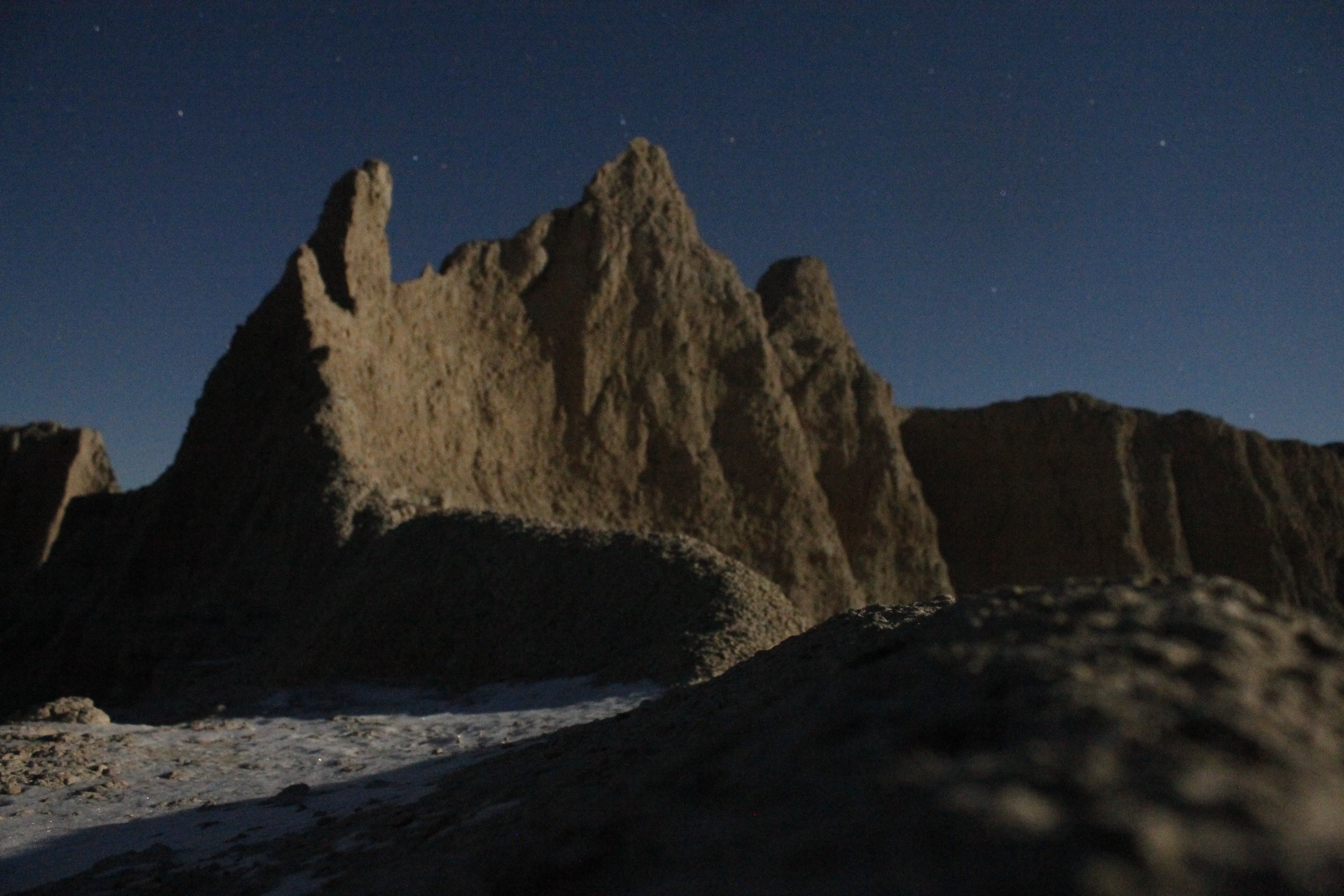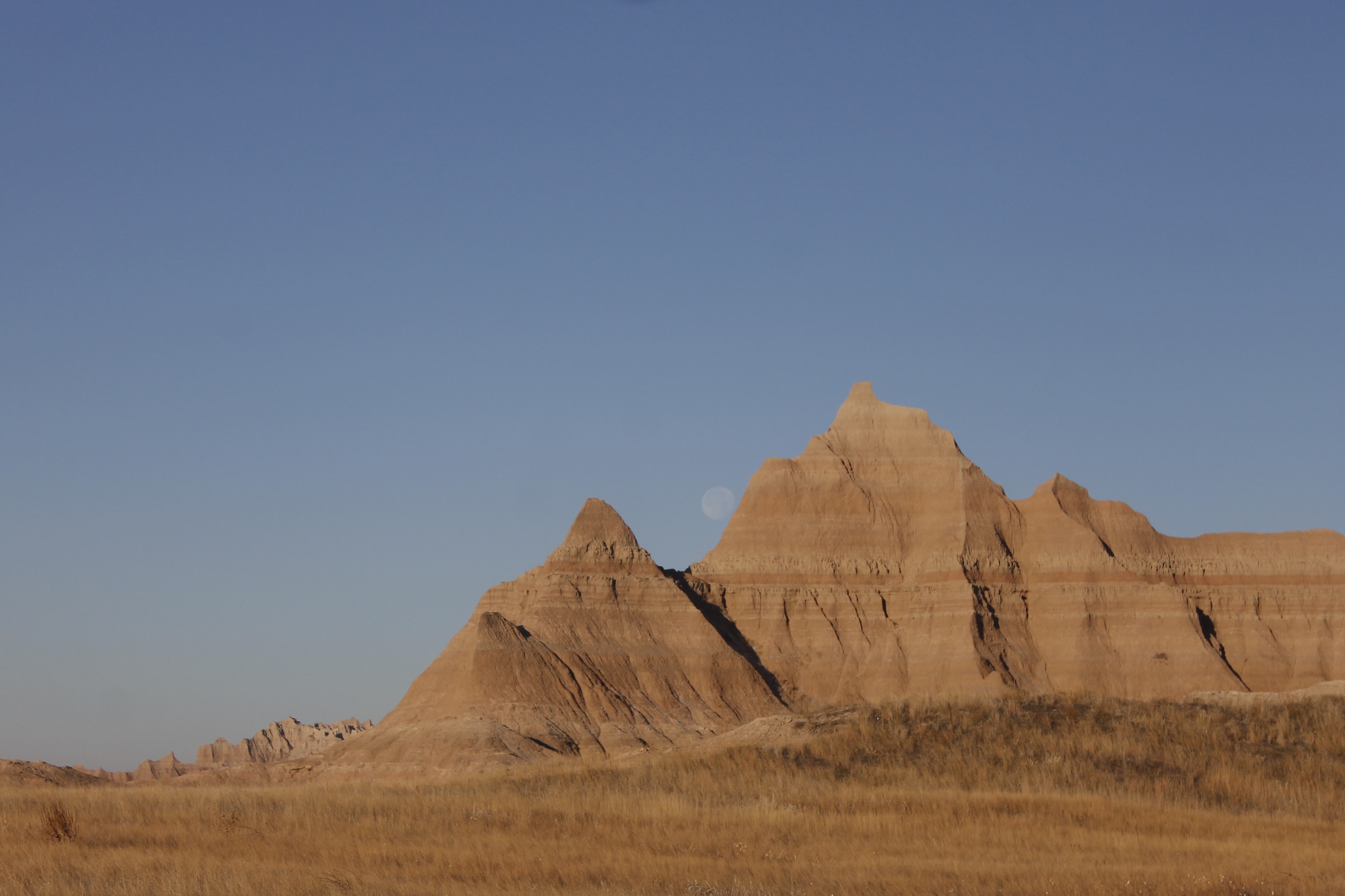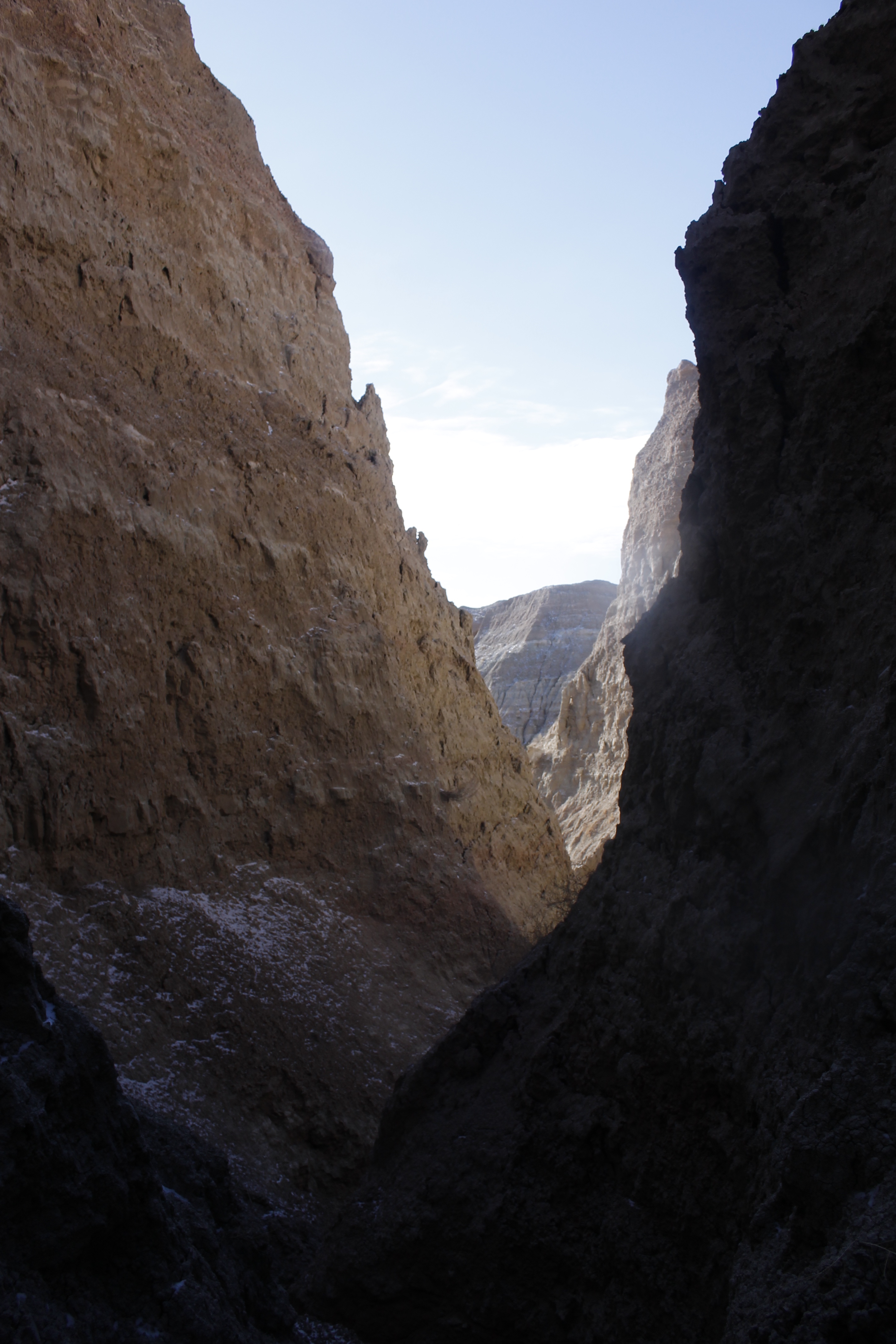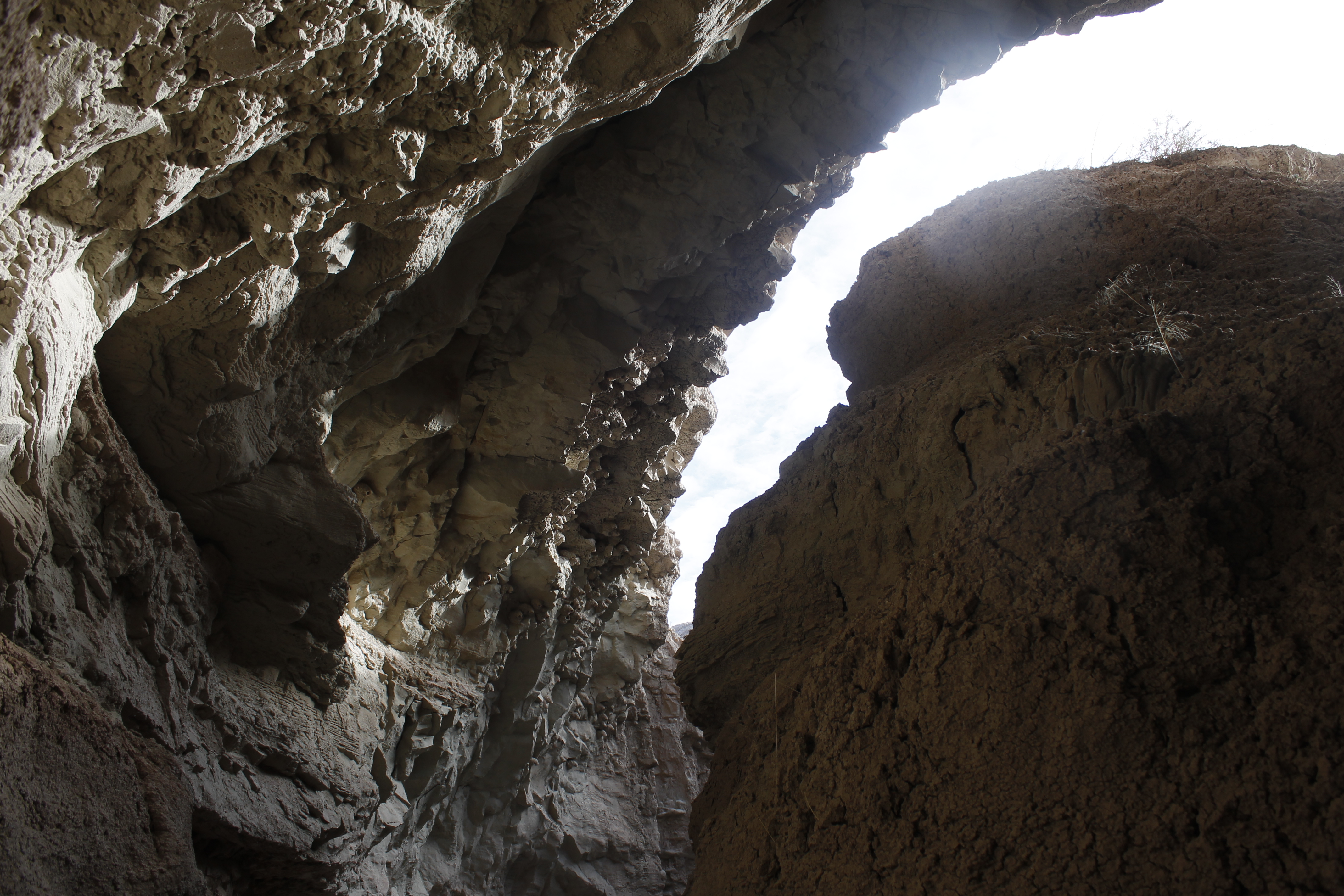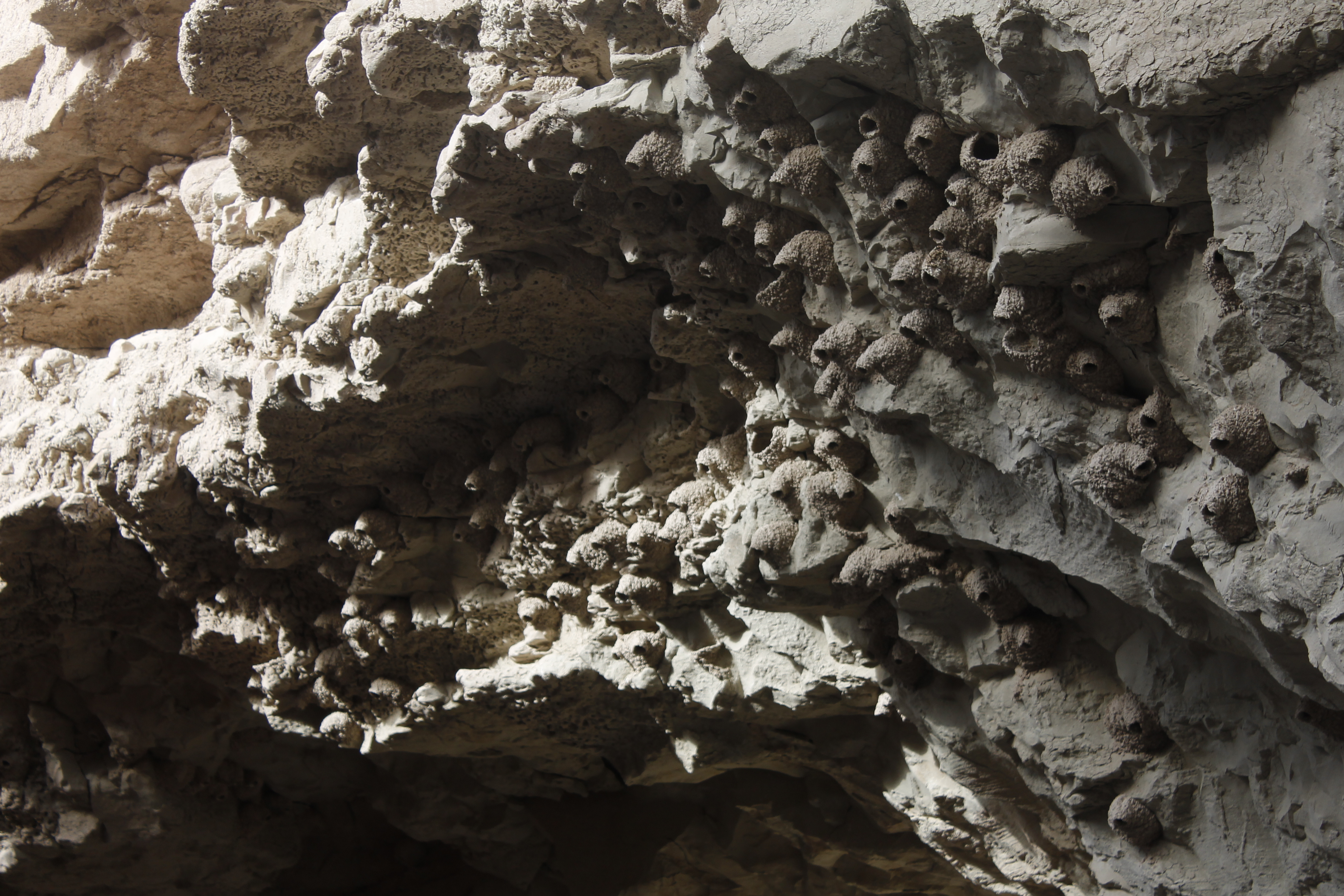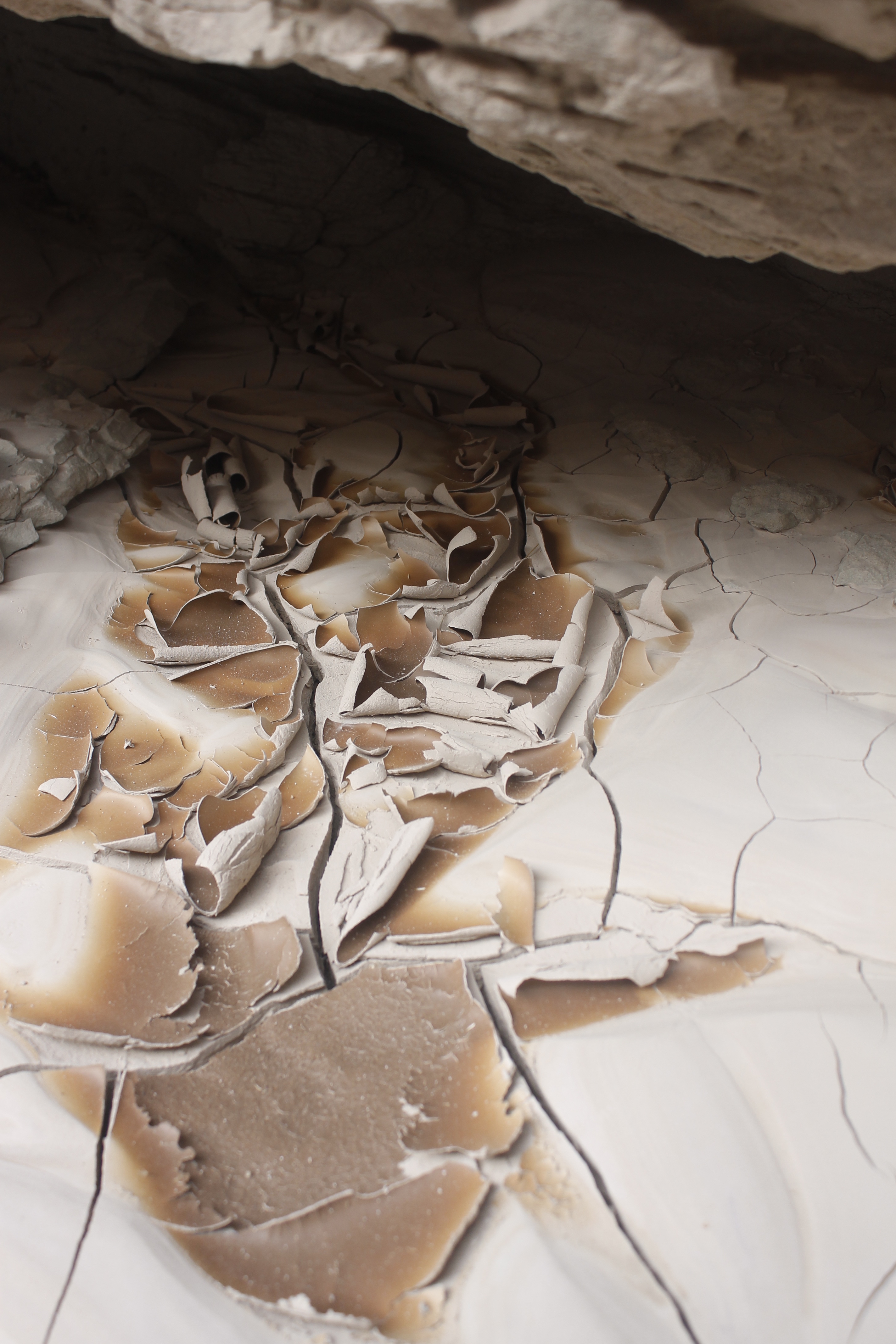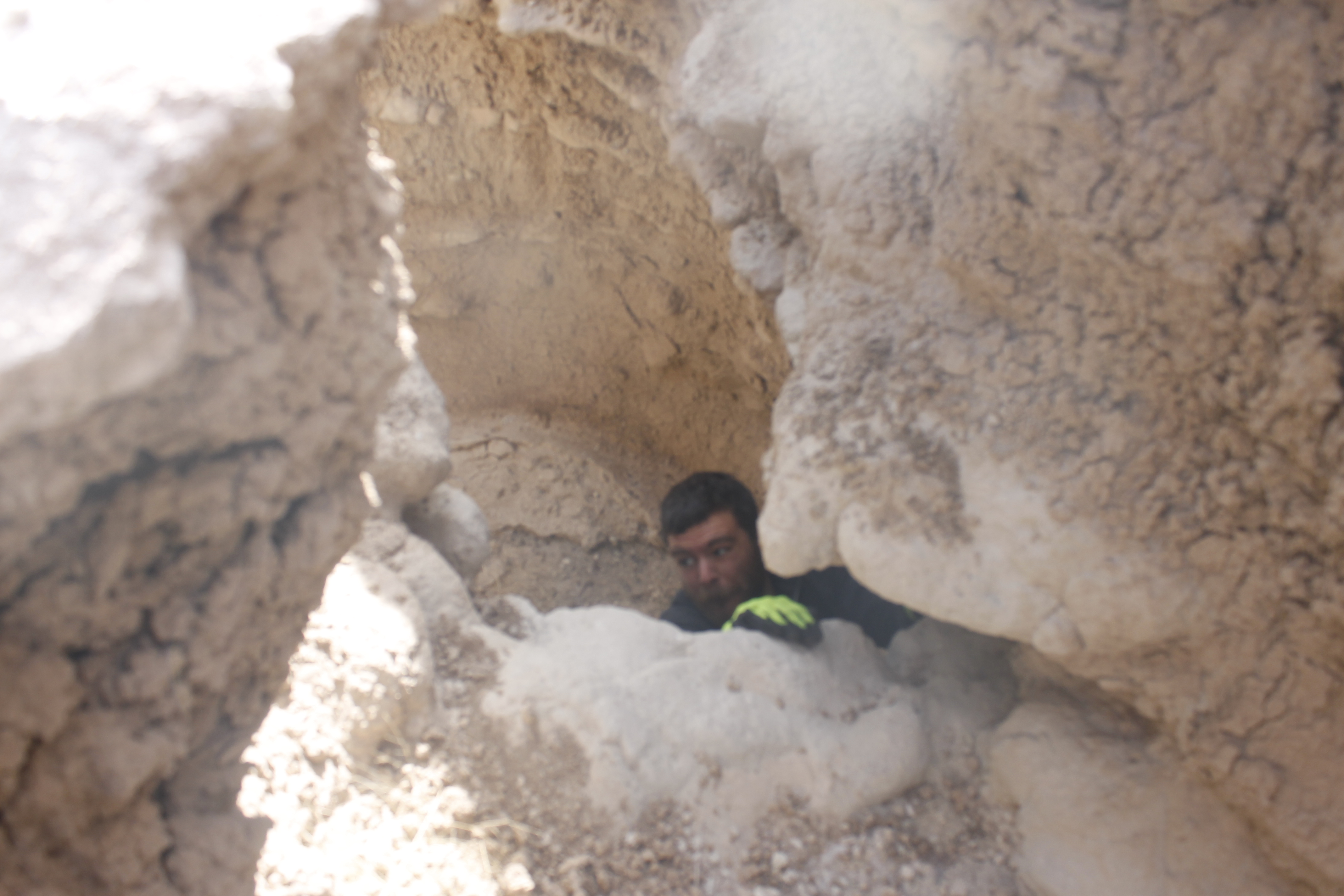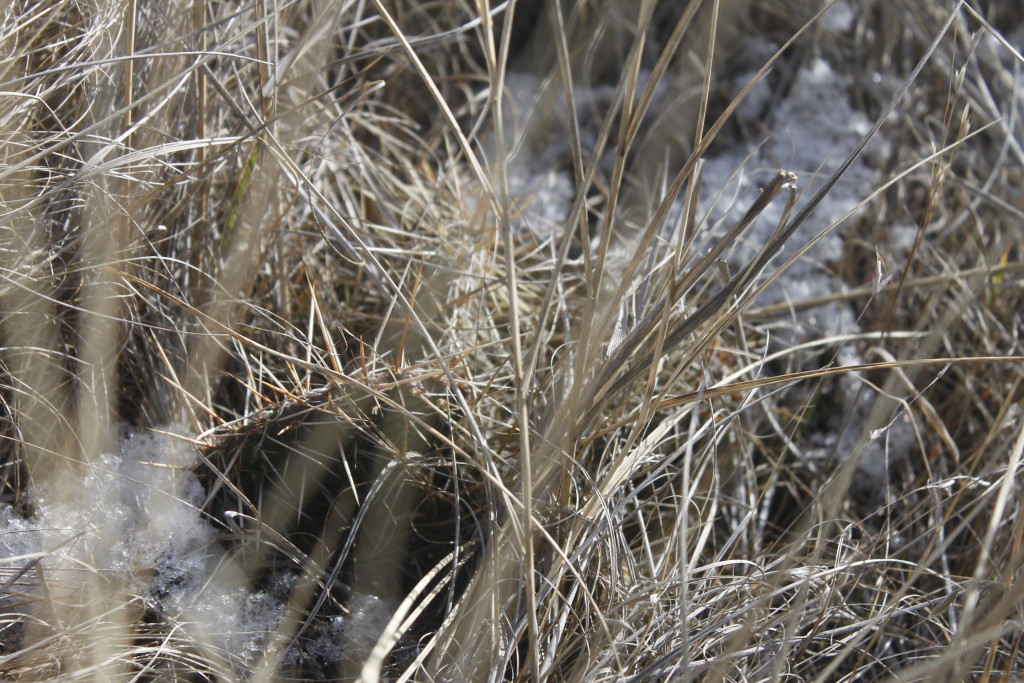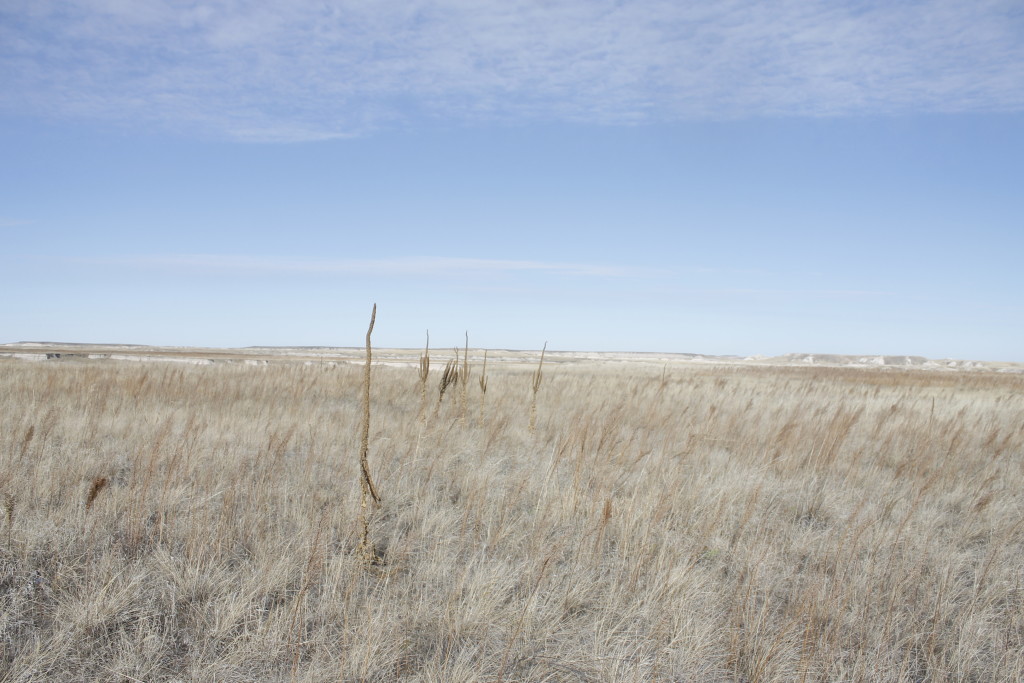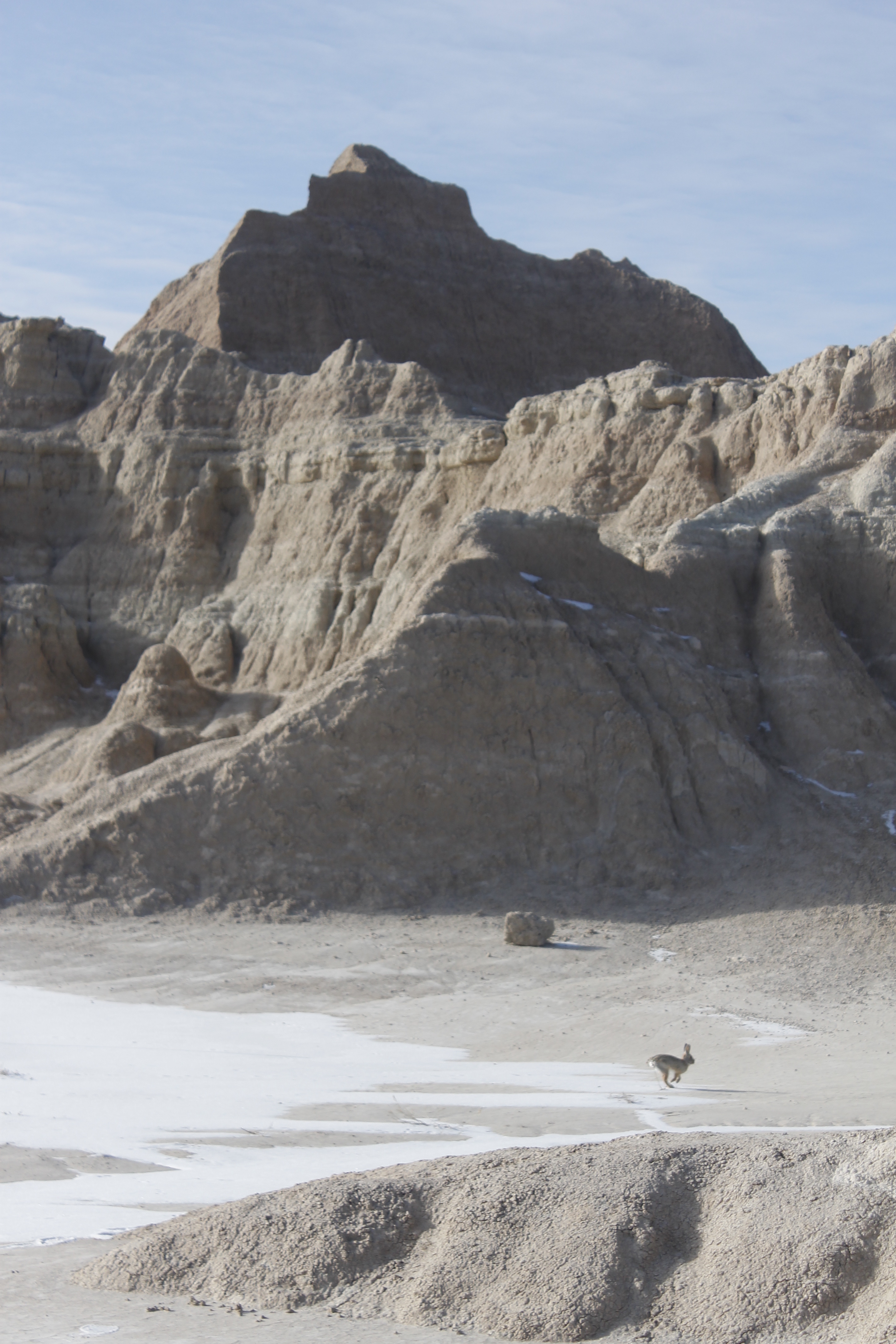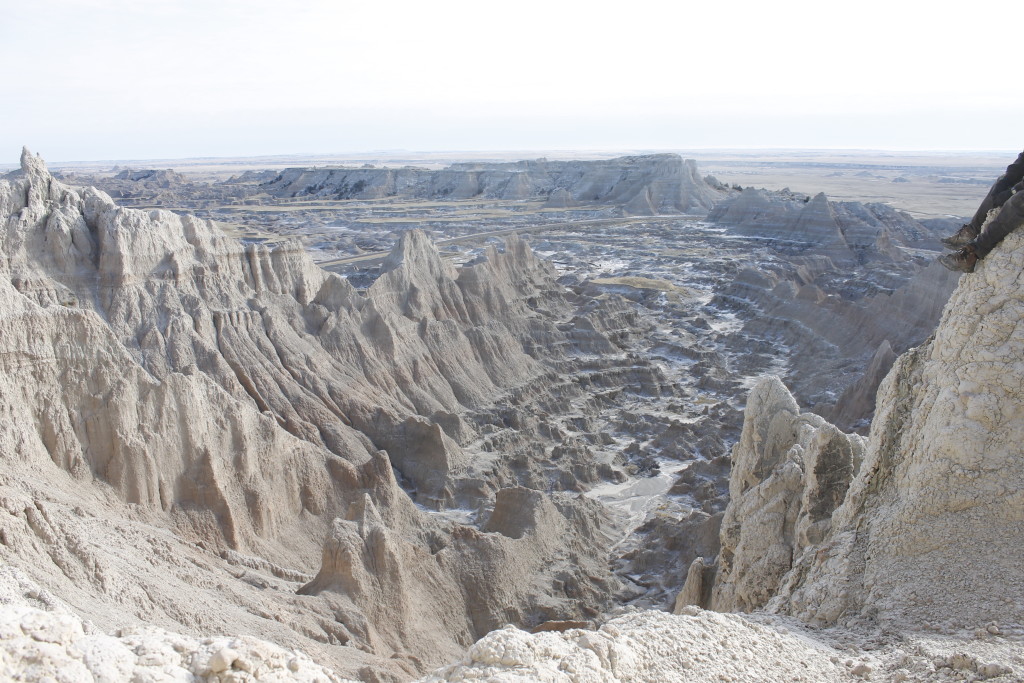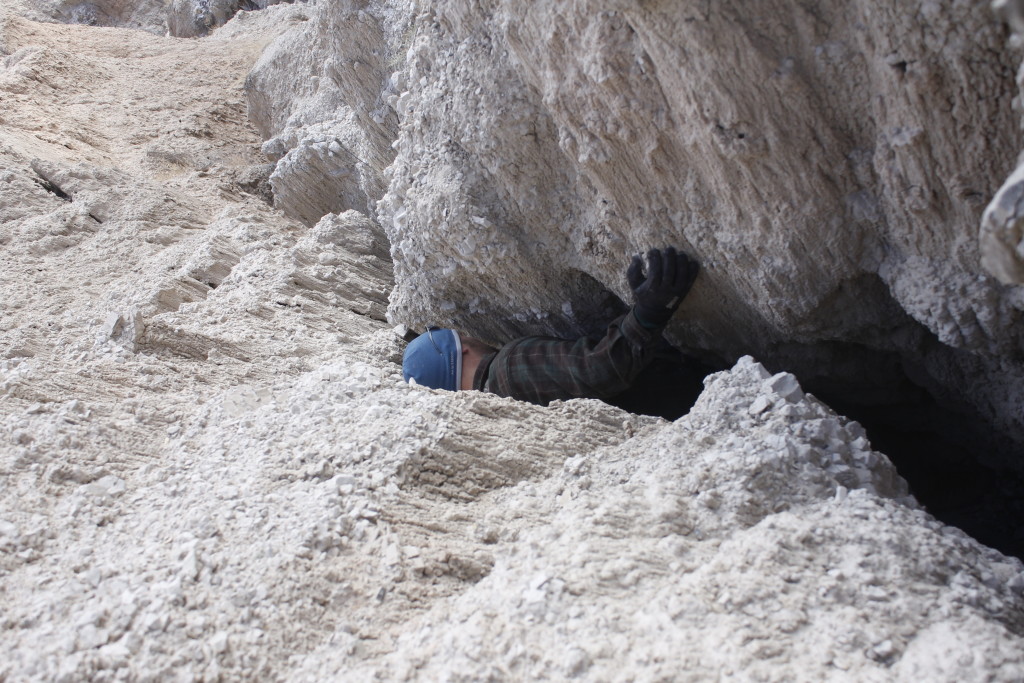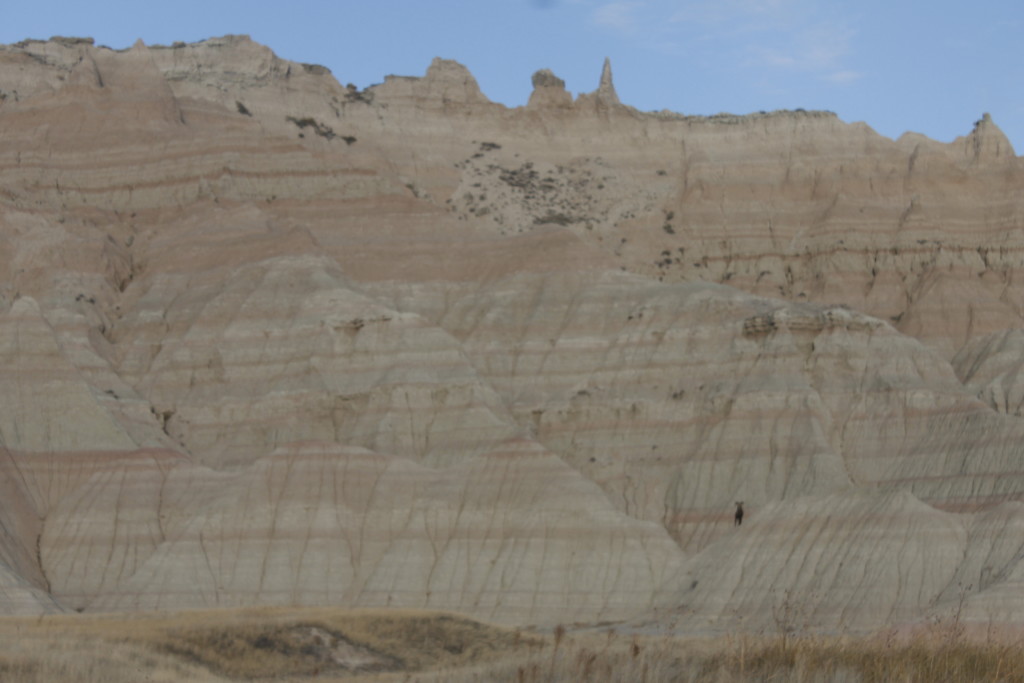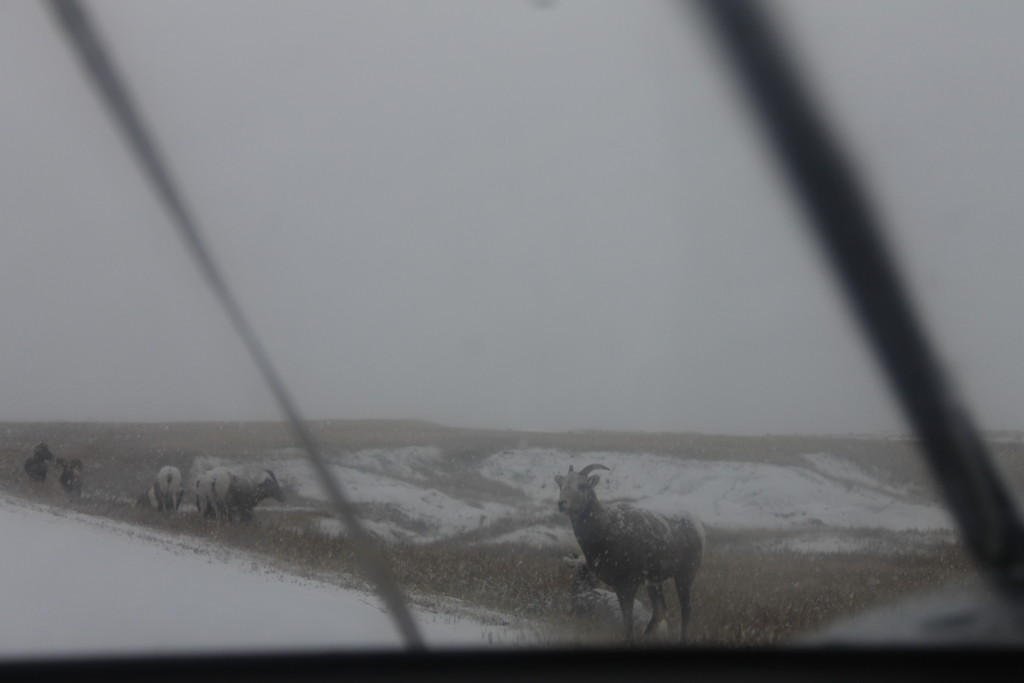Beneath the cold moon, the silent architecture of buttes and canyon washes within South Dakota’s Badlands created a compelling landscape. The white light only emphasized the coldness of the frosty ground along with the snow that had blown in from the plains.
A yipping coyote chorus rose up from somewhere out in the sagebrush plains. Numbness set into my fingers and toes soon after I left the car.
I pitched tent at the same campground I had visited four years ago when I moved out to Wyoming. I slept through another freezing night, woke up in the morning, to run out furiously along the road in my parka and wind-shell, summoning all the heat I could. The moon was still in the sky but not for long. I photographed it in front of one of the buttes, imagined it was rolling down the hill.
There was one other tent at the campground. When I finished running, I went over and introduced myself to a guy named Shaun, who was traveling from Idaho to Iowa where he was due at a Christening ceremony.
We got to talking, and it turned out that we had a few things in common, namely that we’d both explored mountains and canyons throughout the west.
Shaun was getting ready to set out on some of the Park Service trails. I said I was planning on exploring the canyon washes off trail and he was welcome to join.
We started up a wash from the Saddle Pass trailhead going northwest. The canyons within the Badlands are instant wilderness. Within a couple of turns, there was no hint of the road, human life, or for that manner, much natural life — at least not the kind that is obvious at first glance. The eye goes to the arches and pinnacles up above, the sinuous curves of a dissolving landscape.
The Badlands topology is a portrait of erosion, millions of years of it. The layers of mud-like stone contain fossils of dinosaurs and ice age creatures.
Wind and rain carve the byzantine canyons and bizarre buttes. It is a subtractive process. What gets subtracted is as important as what remains.
As I progress further and further into what might be called adulthood, I am always pressing myself to add more to myself: new skills, new life experiences, new income, new stories and new relationships. But as I meditated on the shapes of canyons and buttes, I considered that subtraction can be valuable too. Artists use blank space to emphasize what remains.
It is easier to focus on one project on an uncluttered desk. More gear in the backpack can just add weight. Those who can hush the chorus of distraction — whether in nature, in art or meditation — have the opportunity to cultivate clear thought and form a sense of self.
Cliff swallows build beautiful mud nests on impossible-seeming overhangs in the canyons. It is safe to say that these dwellings won’t have to worry about a visit from a fox or rattlesnake.
I stopped to admire some drying mud curled up like parchment paper in this small canyon grotto.
Shaun and I found a side-canyon which involved a tricky chimney climb up the crumbly sidewalls. It took me a couple of attempts to get to the place where he took this picture.
Scrambling in the canyons and on the buttes is definitely sketchy due to the crumbliness. I rarely placed a foot or handhold that I felt 100 percent sure of.
Can you spot the prickly pear cactus in this photo? This is one challenge of running off trail that I’ve encountered in western states. I’ve stabbed my feet plenty of times while running through innocent-seeming grass.
I love the contrast between the corrugated-weirdness of the canyons and the flat expanse of planes. Shaun and I found some bighorn sheep horns lying in the field here.
A jack rabbit passes through.
Shaun and I climbed up one of the buttes to get this view looking down toward the fossil exhibit trail. We didn’t quite make it to the top due to the crumbly substrate and the steep pitches. The top layer of the buttes is called the Sharps Formation, which is appropriate given the knife-like aretes and spires that mark the Badlands skyline.
We down climbed through a canyon, which required some of the same same chimneying and stemming moves I’d used canyoneering in Utah. Then Shaun dropped his balaclava into a crevasse and had to get skinny in order to rescue it.
We later tried to use a topographic map to feed into another canyon system, but found the terrain to be completely disorienting and difficult. We crawled through mud tunnels gopher-like in the canyons, risked walking over a couple archways. Finally we took a steep drainage down to the road, about a mile away from where we’d parked.
A bighorn sheep checks us out from one of the buttes.
I had a backcountry permit allowing me camp in a secluded part of the park overnight. The snow was falling as I drove out the next day and I got a parting shot of this group of bighorns.

